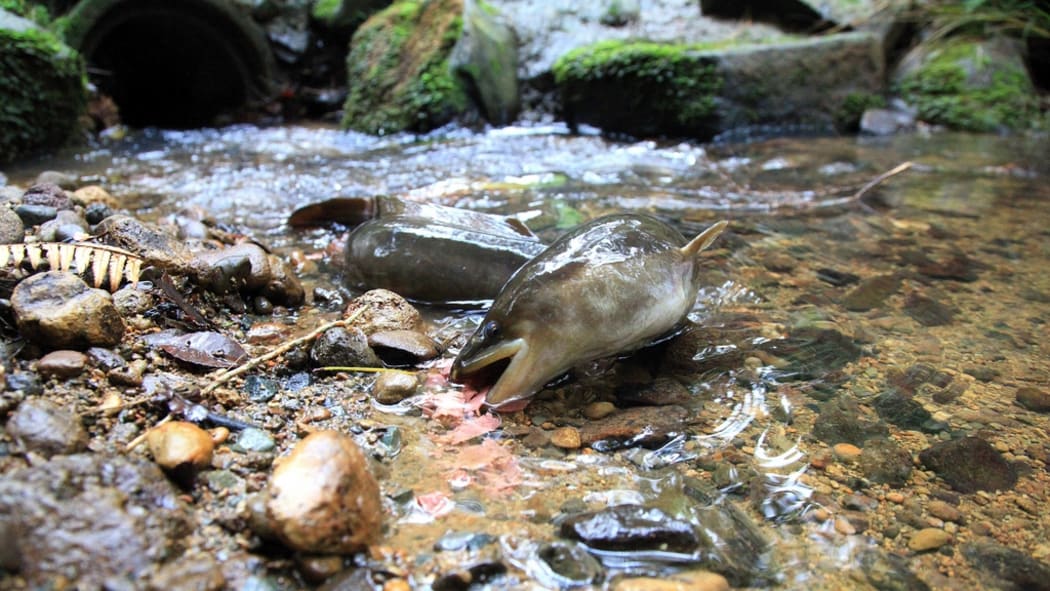Over the years, New Zealand has made great strides in helping baby elvers upstream into the creeks and streams where they make their homes.

Small longfin eel. Photo: Tony Foster (CC BY-ND 2.0).
Native longfin eels can live up to 100 years in the same spot before finally feeling the urge to head back out to sea to breed.
But when it comes time for them to make their way downstream they run into hydro dams and get sucked into the turbines - and as you might imagine, not many of them survive.
Don Jellyman is a freshwater fisheries scientist who's spent much of his career focusing on eels.
He says getting eels past hydro dams is a worldwide problem - but in New Zealand it's particularly difficult.
Read edited highlights from their conversation
Can we discuss some of the biology of eels, they take their time don’t they?
Yes, they do they’re a fascinating animal, they spawn once at the end of their life but in the case of female eels that can be 50-plus years.
[There are] two types – shortfin and longfin.
Yes, the shortfin is one we share with Australia and the Pacific and it doesn’t grow to such a large size, it tends to live in downstream areas. Females would be 25-30 years at maturity, But they biggie is the longfin – it’s only found in New Zealand and females can be in excess of 40 years old when they spawn.
So they both breed at sea?
Yes they do. Freshwater eels worldwide and there’s about 19 different species are basically a tropical species that’s invaded fresh water so the fascinating thing is that they all maintain a marine spawning – a tropical marine spawning are which in the case of our eels means a very long trek of about 5000kms.
What is happening with these dams?
It is a part of a worldwide problem. Getting small eels above dams is not too difficult. We can capture them and utilise their ability to climb, so we can have them climbing small ladders and dropping in to containers and we can physically transport them upstream and that happens. About 4-5 million eels are transferred upstream each year. But the difficulty is getting adult eels back down stream. They tend to migrate in conditions that make it very difficult to intercept them. So they like dark and stormy nights and closed in rivers. And under those conditions it’s very hard to divert them away from hydro station intakes.
It’s a worldwide problem, but in New Zealand is it particularly tricky?
Yes, it’s a particular problem that is extenuated in New Zealand partly because our rivers tend to be quite flashy. They rise and fall quite rapidly. Also our turbine design is a little different to overseas ones. We tend to have smaller diameter, but fast rotation turbines and there are two different types basically…but they both share this common issue of fast rotation speed, so all of those mitigate against the survival of large eels.

